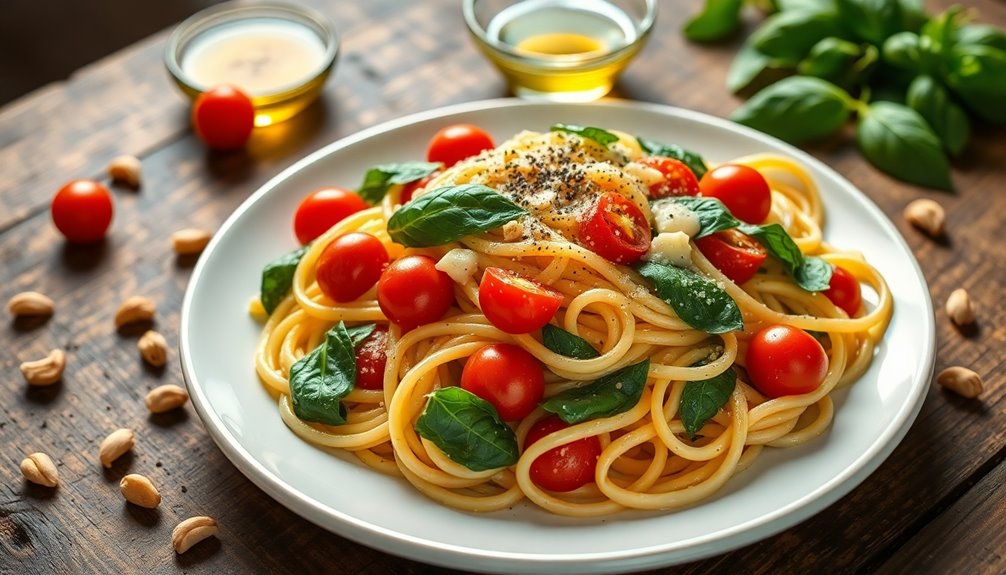Caciotta cheese, a semi-soft Italian delight, offers a creamy texture and a mild, buttery flavor that makes it a fantastic choice for many dishes. It pairs well with fruits, nuts, and wines, becoming the star of cheese boards or enhancing pasta with its richness. Whether you're melting it in sauces or enjoying it with seasonal veggies, Caciotta's versatility shines through. To discover more about its history and culinary uses, stick around and explore further!
History
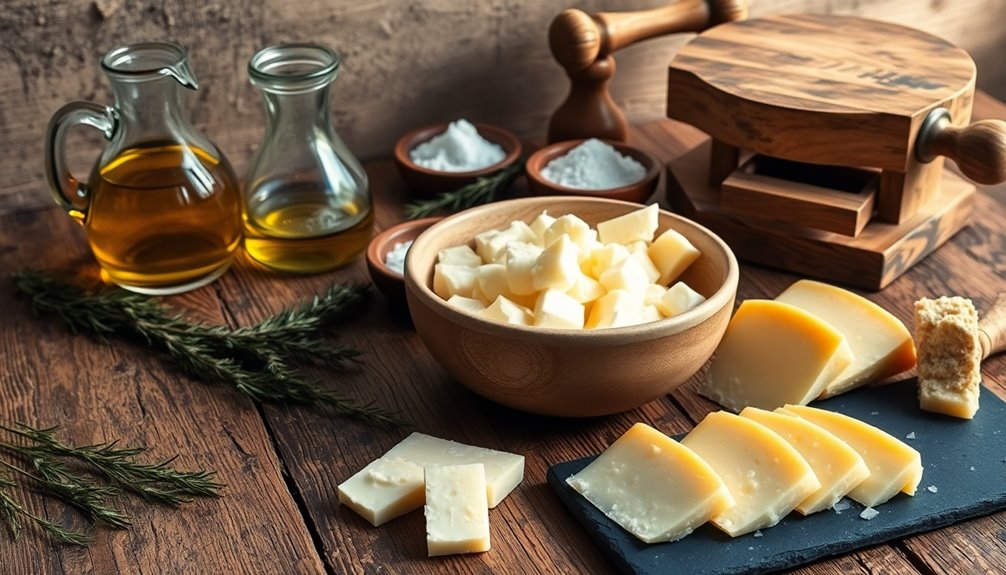
Caciotta, which takes its name from the Italian word "cacio," showcases a rich history rooted in regional cheese-making traditions. Developed as a sweeter and more delicate alternative to the sharper Pecorino, it reflects the evolution of Italian cheese-making.
Each region in Italy produces its own variation, influenced by local customs and the types of milk available—cows milk, goats milk, and sheeps milk all play a significant role in shaping flavor profiles.
Caciotta's cultural significance extends beyond just taste; it appears in local dialects, idioms, and proverbs, highlighting its importance in Italian life.
Over time, Caciotta's unique flavors have earned it recognition and popularity among both adults and children, making it a beloved staple in Italian cuisine.
Recipe

Caciotta cheese is a versatile ingredient that can elevate your pasta dishes with its creamy texture and mild flavor. This recipe features Caciotta melted into a delightful sauce, bringing comfort and richness to your meal. Paired with fresh vegetables and herbs, this dish is perfect for a weeknight dinner or a special gathering with friends and family.
To start, gather your ingredients and prepare your pasta of choice. This recipe works well with any long pasta, such as spaghetti or fettuccine. The Caciotta will melt beautifully to create a silky sauce, bringing all the flavors together. Add your favorite seasonal vegetables to enhance the dish and create a colorful plate that's as pleasing to the eye as it's to the palate.
Gather your ingredients and choose your favorite long pasta to create a creamy, flavorful dish with seasonal vegetables.
Ingredients:
- 8 oz pasta (spaghetti or fettuccine)
- 1 cup Caciotta cheese, grated
- 2 tablespoons olive oil
- 2 cloves garlic, minced
- 1 cup cherry tomatoes, halved
- 1 cup spinach leaves
- Salt and pepper to taste
- Fresh basil leaves for garnish
Cooking Instructions:
Cook the pasta according to package instructions until al dente.
While the pasta is cooking, heat olive oil in a large skillet over medium heat. Add minced garlic and sauté for about a minute until fragrant. Then, add the cherry tomatoes and cook until they begin to soften.
Stir in the spinach and cook until wilted. Once the pasta is cooked, reserve a cup of pasta water and drain the rest.
Combine the pasta with the sautéed vegetables in the skillet, then gradually add the grated Caciotta cheese, stirring until it melts and forms a creamy sauce. If the mixture appears too thick, add a little reserved pasta water to reach the desired consistency.
Season with salt and pepper to taste.
Extra Tips:
For added flavor, consider using flavored varieties of Caciotta, such as Ancho Chile or Basil, which can bring an exciting twist to the dish.
You can also experiment with different vegetables based on the season or what you have on hand. For a bit of crunch, top the pasta with toasted pine nuts or breadcrumbs before serving.
Finally, don't forget to garnish with fresh basil for a burst of color and flavor!
Cooking Steps

To make your Cachotta cheese, you'll start by coagulating the milk with rennet, setting the stage for curd formation.
Once you've achieved a clean break, cut the curd into small pieces and carefully drain the excess whey.
Don't forget to add your desired bacterial cultures for that unique flavor profile you're after!
Step 1. Coagulate Milk With Rennet
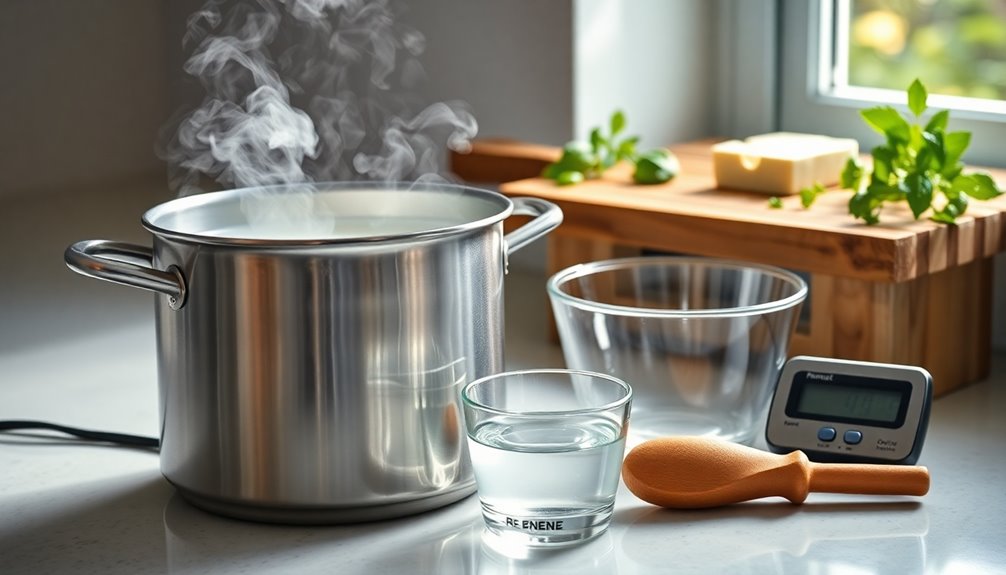
Start by heating the milk to 98°F (37°C) and adding the appropriate cheese culture.
Let it rehydrate for about 2 minutes before allowing the milk to sit undisturbed for 45-60 minutes. This step is crucial for the water buffalo milk to develop the right flavors.
After the resting period, gently add 2.5ml (1/2 tsp) of single strength liquid rennet to the milk.
Allow it to sit for an additional 20 minutes, during which time you'll want to monitor the temperature, as it might drop slightly.
After 20 minutes, check for a clean break in the curd; this indicates effective coagulation.
Remember to sanitize your cheese molds and draining cloths while waiting!
Step 2. Cut Curd Into Small Pieces

Once the curd has set properly, you'll want to cut it into walnut-sized pieces to aid in whey removal.
Grab a long knife or curd cutter to make clean cuts, ensuring the pieces are uniform for even cooking.
After cutting, gently stir the curds for about 10 minutes. This promotes whey expulsion and prevents the curds from matting together.
If you want a firmer texture, you can raise the curd temperature to 102°F for an additional 15 minutes while continuing to stir.
Just remember, the total stirring time shouldn't exceed 25 minutes to keep the curds at the right moisture level.
This step is crucial for achieving the ideal consistency in your cheese.
Step 3. Drain Excess Whey Carefully

As you proceed with the cheese-making process, carefully draining the excess whey is crucial for achieving the right texture and flavor in your Caciotta.
After cutting the curd into walnut-sized pieces, remove about 40% of the whey to expose the curd for further processing. Gently stir the curd to ensure even moisture distribution while monitoring its texture; it should feel slightly firmer after whey removal.
Next, use a sanitized mold to transfer the curd, packing it lightly above the surface to maintain shape and consistency. Properly draining the whey not only affects the final acid content but also contributes to the aging process, ultimately influencing the overall quality of your Caciotta.
Step 4. Cultivate Desired Bacterial Cultures
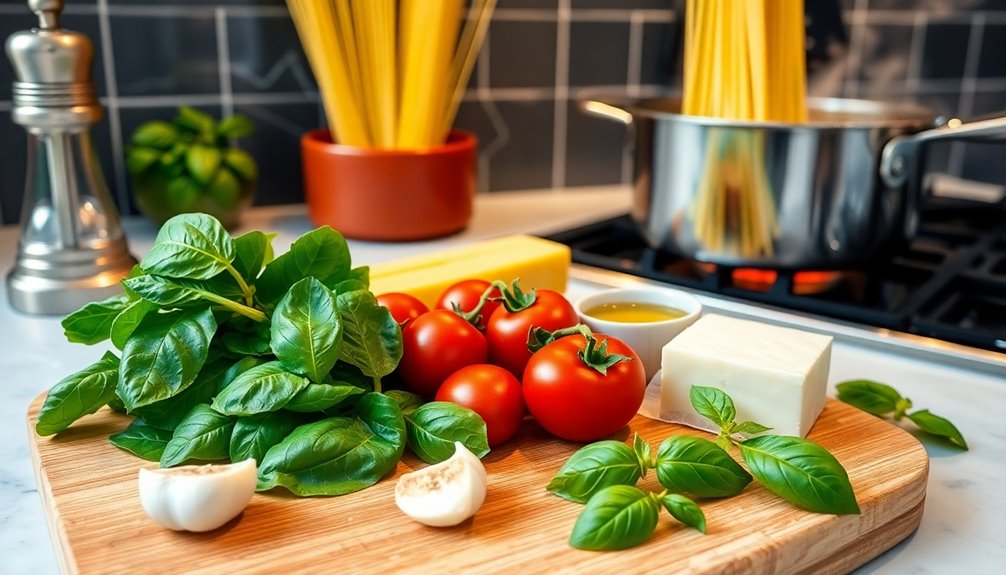
To cultivate the desired bacterial cultures for Caciotta, heat the milk to 98°F (37°C) before adding the culture, ensuring optimal conditions for growth.
Next, sprinkle the culture powder evenly over the milk's surface and let it sit undisturbed for 2 minutes to rehydrate effectively.
After this rehydration period, allow the milk to sit for an additional 45-60 minutes. This step is crucial for promoting the development of bacterial cultures at a consistent temperature.
Make sure to maintain the milk's temperature during this time, as cooling can hinder culture growth.
Step 5. Add Cultures for Flavor

After you've allowed the milk to rest and develop its cultures, it's time to add the cheese culture for flavor. First, heat the milk to 98°F (37°C) for optimal results.
Sprinkle the culture powder evenly over the surface, letting it rehydrate for about 2 minutes. This step is vital for flavor development, so be patient!
Then, let the milk sit undisturbed for 45-60 minutes to ferment properly. If you're experimenting, consider using a blend of cow's, sheep's, or goat's milk to create a unique flavor profile ranging from mild to tangy.
Finally, during the molding stage, feel free to add herbs or other ingredients to enhance your Caciotta's flavor, making it truly your own.
Final Thoughts
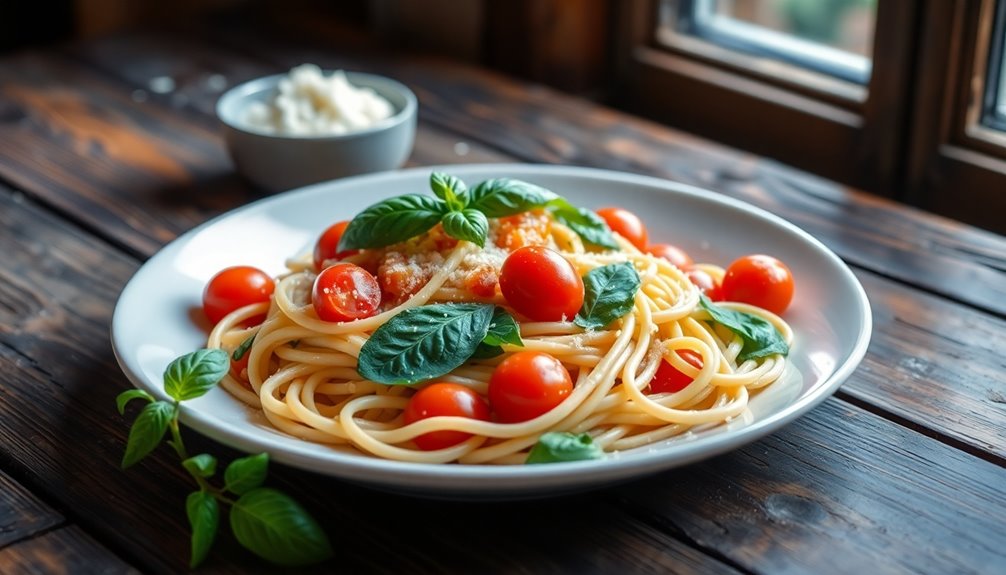
While exploring the world of cheese, you'll find that Caciotta stands out for its versatility and unique character.
This cheese offers a delightful range of flavors, from mild and tangy to robust, depending on its milk source and added ingredients. Its semi-soft texture makes it perfect for slicing, spreading, or melting, making it an excellent choice for any occasion.
Whether you're hosting a formal dinner or enjoying a casual snack, Caciotta pairs beautifully with fruits, honey, and wines, enhancing your culinary experience.
You can easily find it in specialty stores or local markets, available in whole or half wheels to suit your needs.
Embrace this delightful cheese and elevate your cheese board today!
Frequently Asked Questions
What Kind of Cheese Is Caciotta?
Caciotta is a versatile Italian cheese that can be made from different types of milk, like cow's, sheep's, or goat's milk.
You'll find it typically has a semi-soft texture and a mild, slightly tangy flavor. Depending on the milk source and aging process, it can range from creamy to crumbly.
It's perfect for cheese boards and pairs well with bread, fruits, and aromatic wines, making it a delightful addition to any meal.
What Is the Flavour of Caciotta Cheese?
Caciotta cheese's flavor is like a gentle breeze on a warm day—mild and inviting. You'll find it slightly tangy, perfect for anyone's palate.
Depending on the milk used, cow's milk gives it a creamy taste, while sheep's or goat's milk adds a richer character.
As it ages, Caciotta becomes smoother and creamier, enhancing its versatility for various dishes or cheese boards, making it a delightful choice for your next culinary adventure.
How to Eat Caciotta Cheese?
You can enjoy Caciotta cheese in many delicious ways! Slice it for a cheese platter, spread it on bread, or snack on it alone.
It pairs beautifully with fruits, nuts, or charcuterie for a balanced bite. For something warm, melt it in pasta dishes or gourmet recipes.
Don't forget to complement it with aromatic wines to enhance the flavors. Try it with honey for a sweet and savory treat, too!
Does Caciotta Cheese Melt?
When you heat Caciotta cheese, it transforms like a caterpillar into a butterfly, melting beautifully into a creamy delight.
Yes, Caciotta does melt, thanks to its semi-soft texture. The melting properties can vary slightly depending on the milk type, with cow's milk versions generally melting smoother.
As it melts, it enhances dishes like pizza and pasta, adding a rich, mild flavor that elevates your culinary creations to new heights.
Enjoy the magic!
